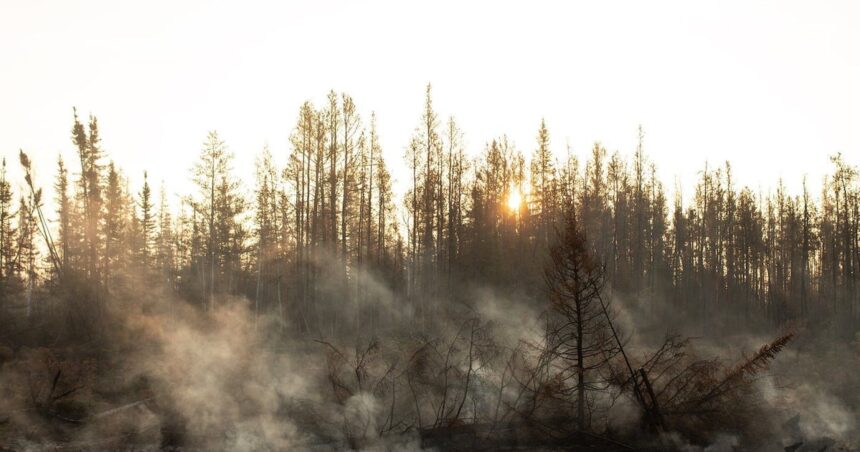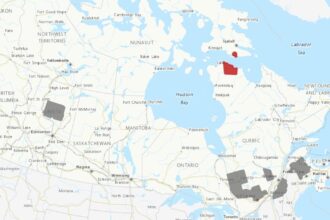A fast-moving wildfire has triggered an urgent evacuation order for residents of Fort Simpson, Northwest Territories, as flames approached within just five kilometers of the community yesterday evening. The blaze, which began as a small lightning strike in the dense boreal forest, has exploded to over 15,000 hectares in less than 72 hours, fueled by unusually dry conditions and strong winds.
“We’re facing an extremely volatile situation,” said Emma Richardson, NWT’s Chief Wildfire Officer. “The combination of record-low precipitation this summer and sustained high temperatures has created perfect conditions for rapid fire spread. Our priority right now is ensuring everyone’s safety.”
Fort Simpson, home to approximately 1,200 residents, sits at the confluence of the Mackenzie and Liard Rivers, traditionally providing natural fire breaks. However, according to territorial officials, shifting wind patterns have pushed flames across containment lines that firefighters had established earlier this week.
The Canadian Rangers have been deployed to assist with evacuation efforts, helping elderly and vulnerable residents reach designated evacuation centers in Yellowknife and High Level, Alberta. Transportation officials have established an air bridge using military and civilian aircraft after the only road connecting Fort Simpson to southern communities was compromised by smoke and fire activity.
“We grabbed what we could—important documents, some clothes, medications,” said Daniel Nasogaluak, a Fort Simpson resident who was evacuated early Thursday morning. “Everything happened so quickly. One minute we were watching the smoke from our porch, the next we were being told we had 30 minutes to leave.”
This marks the third major wildfire evacuation in the Northwest Territories in recent years, following the devastating 2023 season that saw Yellowknife itself evacuated. Climate scientists have linked the increasing frequency and intensity of northern wildfires to climate change, with the Arctic warming at more than twice the global average rate.
Federal Environment Minister Caroline Thomas announced emergency funding of $25 million to support evacuation efforts and firefighting resources. “The federal government stands ready to provide whatever assistance is needed,” Thomas stated during an emergency press conference in Ottawa. “We’ve activated the National Emergency Response System and have additional water bombers and firefighting crews en route from Ontario and Quebec.”
Provincial wildfire services across Canada have contributed resources to the effort, with over 200 firefighters from British Columbia, Alberta, and Ontario joining local crews. The Canadian Armed Forces have mobilized two CH-147 Chinook helicopters to assist with evacuation operations and heavy equipment transport.
Fire behavior analysts predict challenging conditions for at least the next 72 hours, with meteorologists forecasting continued dry conditions and variable winds. Satellite imagery shows several other wildfires burning throughout the territory, though none currently threaten other communities.
For evacuees, the experience has become distressingly familiar. “This is the second time we’ve had to leave in three years,” said Jennifer Cardinal, who fled with her three children and elderly mother. “Each time you wonder if you’ll have a home to return to. The uncertainty is almost as difficult as the evacuation itself.”
As climate change continues to alter northern ecosystems, communities like Fort Simpson face an uncertain future. Infrastructure designed for historically stable permafrost is increasingly vulnerable, and traditional fire seasons now extend weeks longer than in previous decades.
As Canada’s north continues to warm at unprecedented rates, will our emergency response systems and community planning adapt quickly enough to this new reality of intensifying natural disasters?










